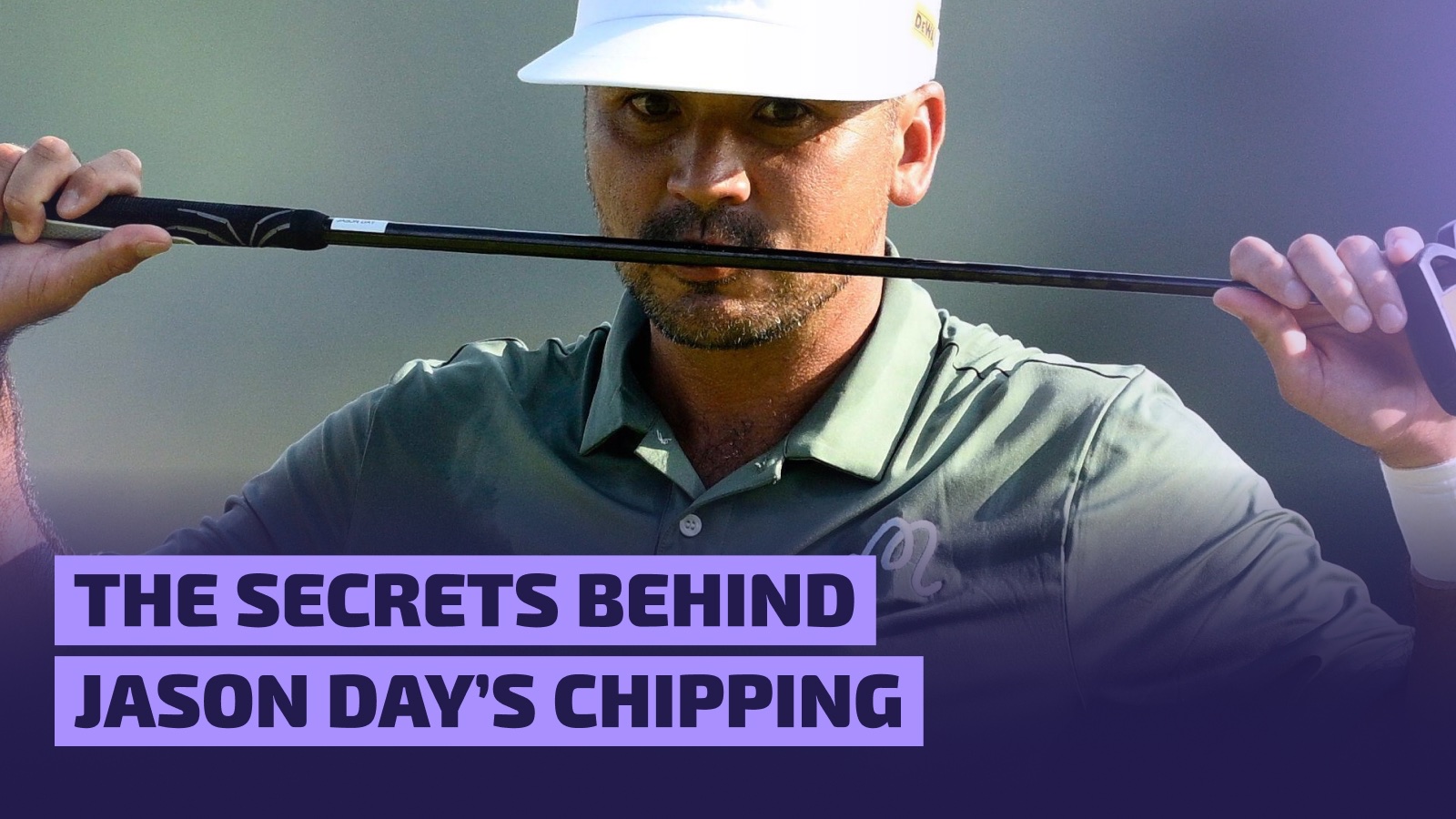Chip like Jason Day with these six simple steps

Jason Day’s short game has long been one of his great strengths. He is fairly distinctive as there is a lack of hinge in his wrists and we hear a lot about his ‘dead hands’.
PGA Professional Barney Puttick explains how he does it and how we can learn from the Major champ.
Understanding chipping
The whole thing with chipping, and I’ve promoted this for a long time, is to look at it in terms of low trajectory and high trajectory, and he plays an awful lot of shots with what I call low trajectory technique.
If you ask your average amateur do you fancy bumbling up an 8 or 9-iron from the front of the green? 90 per cent of them will be quite confident on that shot. It’s just when they’ve got something in the way, they don’t really fancy it.
And I will always say to them, you’ve actually got the shot, it’s staring you in the face. All you’ve got to do is apply the same technique with a much more lofted club, and it’s like you’ve just split the atom.
So I will put a lofted wedge in their hands and tell them to repeat the shot. Now obviously you’re not going to get it super high but the club has got a lot of built-in loft, and I think that’s the bit that suddenly clicks with them.
Picture this
It’s like an underarm throw where basically your hand and your forearm keep pace with each other. That’s why when you watch him do it he looks so crushingly simple. But then so is throwing a ball underarm.
And if you want to vary the height of an underarm throw, you don’t put extra wrist action in if you want to throw it high, you just release it further up in the arc of the throw.
The stance
I like just have the feet and the hips just a little bit open because it’s just giving your hips a head start.
It’s all about impact and, on a smaller movement, you don’t have the momentum to build that hip opening up position. So if you’ve already got them slightly open, it’s like with the hand position with the ball off the back foot, the hands will assume the right position with a slight forward lean.
The takeaway
I always say to people, just move the club away with your left shoulder. John Daly practises with just his left hand on the club and I’m a huge fan of this. So do a couple of one-handed swings prior to the stroke, to almost like settle the feel, and then literally just try and keep that same feel.
Whether you feel like it’s maybe more left-side or lead-arm dominated, and then the back arm will just go for the ride, it’s a very useful drill.
The shot
It’s real simple stuff where Jason stands a little bit open, drifts the weight forwards, plays it off his right toe, hands obviously are a bit more towards the centre of the body and then it’s straight back, straight through with not a stiff wrist but with very little hand action.
The big key is to make sure the backswing and the through swing are the same distance, because what I see a lot of is a long backswing and then it sort of peters out.
Stop the scoop
This is always the big error. Start off by playing it off the back foot, get the strikes going and you’ll get what I call a middle trajectory sort of shot.
And then you can actually then take it forwards in your stance.
Obviously the hands will be a bit more level now, but you’ve almost taught the hands and the body what the movement should be.
So you’ve taken away that flip, because with this method, you very subtly start to engage your body more, which is the key to striking it properly, getting the low point right.
Everybody stands there and we almost freeze a bit, we stand too square and just scoop it with their hands rather than letting the body flow to it.
Summary
With the weight forwards and by just standing a little bit open, you’ve made it more natural for the body. I think it’s just when people freeze, and it gets ball-orientated, things get tricky.
One of psychologists who I work with used to get people to hit airflow balls, and tennis balls and squash balls, just to vary the difference in the feel of the clubface. We all know the strike and feel of any good shot and this is another great practice drill.
About Barney Puttick
Barney turned professional in 1979 and worked under Ian Connelly who was best known as Sir Nick Faldo’s original coach.
He was once tied for third with Greg Norman in a 36-hole tournament in Cannes, behind Corey Pavin.
He is based at Mid Herts GC since 2000 and he is a Golf Monthly Top 50 coach.